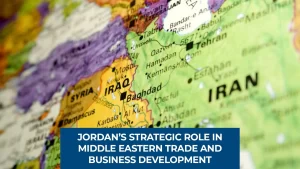Leadership is like a chess game with creative strategies and forethought. Therefore, chessboard leadership is not about just anticipating and making blind moves. Hence, one needs to comprehend the dynamics and develop strategies for the long term accordingly. Read the article carefully and understand how mastering the leadership chessboard demands a deep sense of strategic actions and the importance of power dynamics.
THE CHESS OPENING: SETTING PRESENCE AND VISION
In chess, the opening move sets your entire game, so in leadership. Making sure to establish a strong and clear vision according to your goal is vital. Hence, a leader must communicate a clear and convincing vision that must inspire the team towards growth. Thus, the leader’s vision acts as a guide in every decision and action.
On the other hand, establishing a proper sight and presence goes beyond words. Hence, it will establish competence and foster an environment where individuals feel heard and valued. A leader must connect with their team as it will enhance the influence and effectiveness accordingly.
THE MIDDLEGAME: NAVIGATING COMPLEXITIES AND CHALLENGES
In the chessboard of leadership, the middle game is marked by complexity and the need for a diplomatic approach. Leaders also encounter challenges and uncertainties. Hence, the phase required critical thinking skills and the ability to make some tough decisions according to the situation.
Furthermore, leaders must understand how to identify and employ any opportunity accordingly in a challenging situation. By employing these strategies properly, leaders can impact the outcome and propel their agenda.
THE ENDGAME: SECURING LONG-TERM SUCCESS
The end game in chess focuses on transforming opportunities into victory. In leadership such move makes sure sustainability and long-term success. Hence, the phase demands deep knowledge and understanding of strategic move build the organization’s position and build lasting value accordingly.
The significant aspect of the endgame is the succession planning. Hence, an effective leader identifies their legacy and achievement and prepares the next leader accordingly. Therefore, by preparing the next leader, they make sure of the continuous growth and development of the organization.
In other words, a good leader concentrates on continuous development and improvements according to the needs and situation. In this evolving globe, organizations have failed to evolve and become obsolete. Hence, a leader with a curious mindset can help the organization stay ahead of the curve.
MASTERING POWER DYNAMICS
Power dynamics are an innate element of any leadership strategy. Make sure to understand and learn these dynamics accordingly for effective leadership. Mastering a dynamic is not a static move as it is based on various factors, including connections, context and the actions taken by the leaders.
Leaders must be aware of the various authorities that drive the leader’s characteristics and connections accordingly. Authority is essential as a leader knows how and when to employ it.
On the other hand, the honest implementation of the authority is essential as the wrong implementation can lead to loss of faith, which can affect the leader. Therefore, a leader must foster teamwork and make sure to build a positive impact overall.
CONCLUSION
In conclusion, the leadership chessboard is diverse and highly complex. It is crucial to realize the situation, adapt, and plan one’s actions, which means being aware of power relationships. The goal statement is essential to help leaders avoid challenges and ensure that programs’ success will be sustainable. By understanding and refining operations’ strategic pursuits and ethical power, leaders can bring their organizations to a new level and ensure long-term successful performance. The effective leader cannot only expect the coming events and make proper corrections but also play with purpose and accuracy, much like a chess expert.






